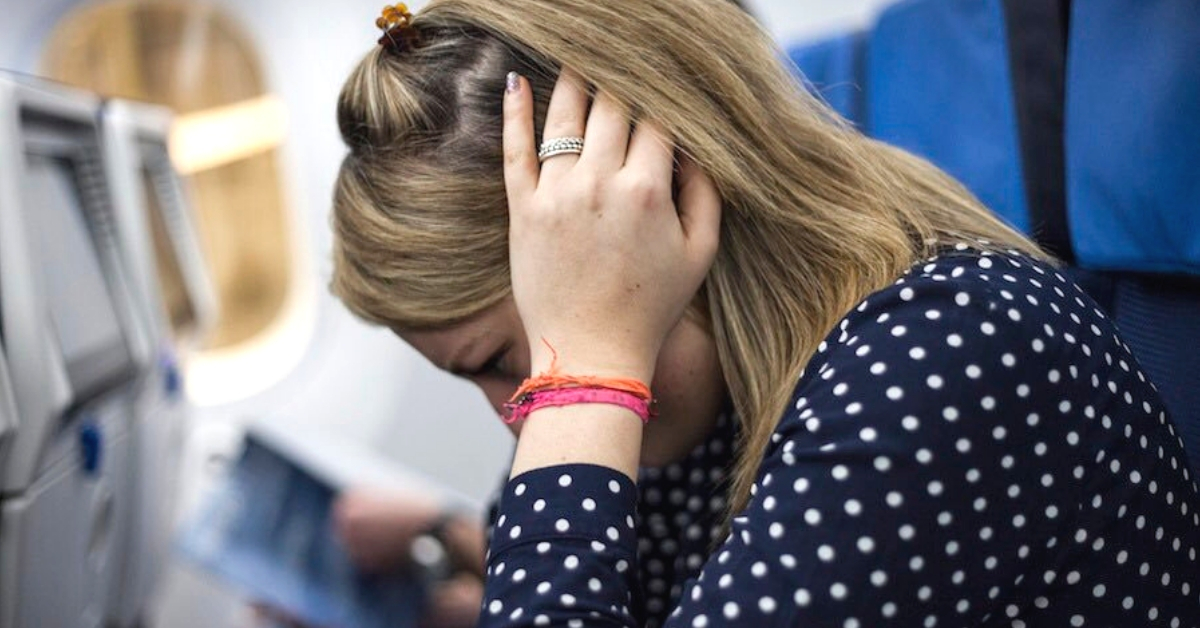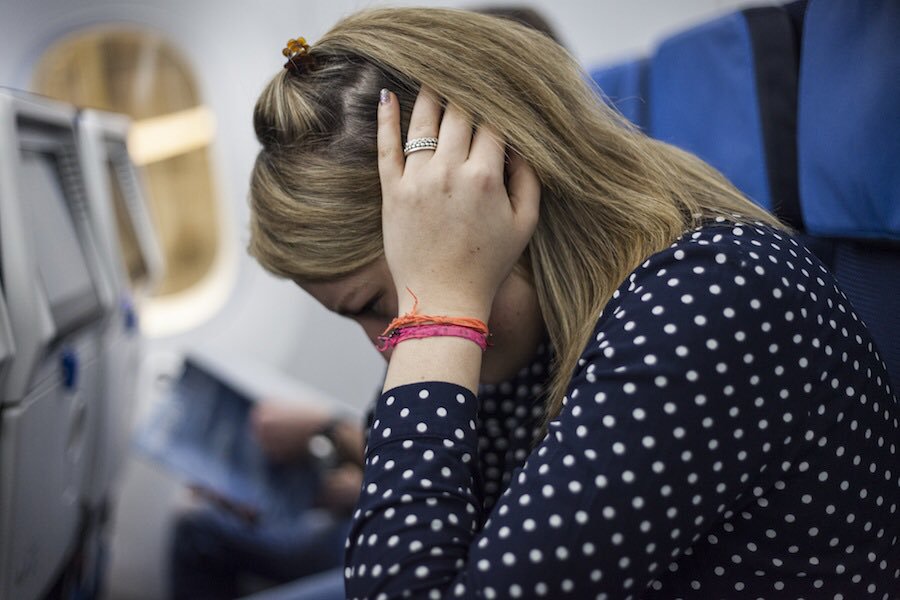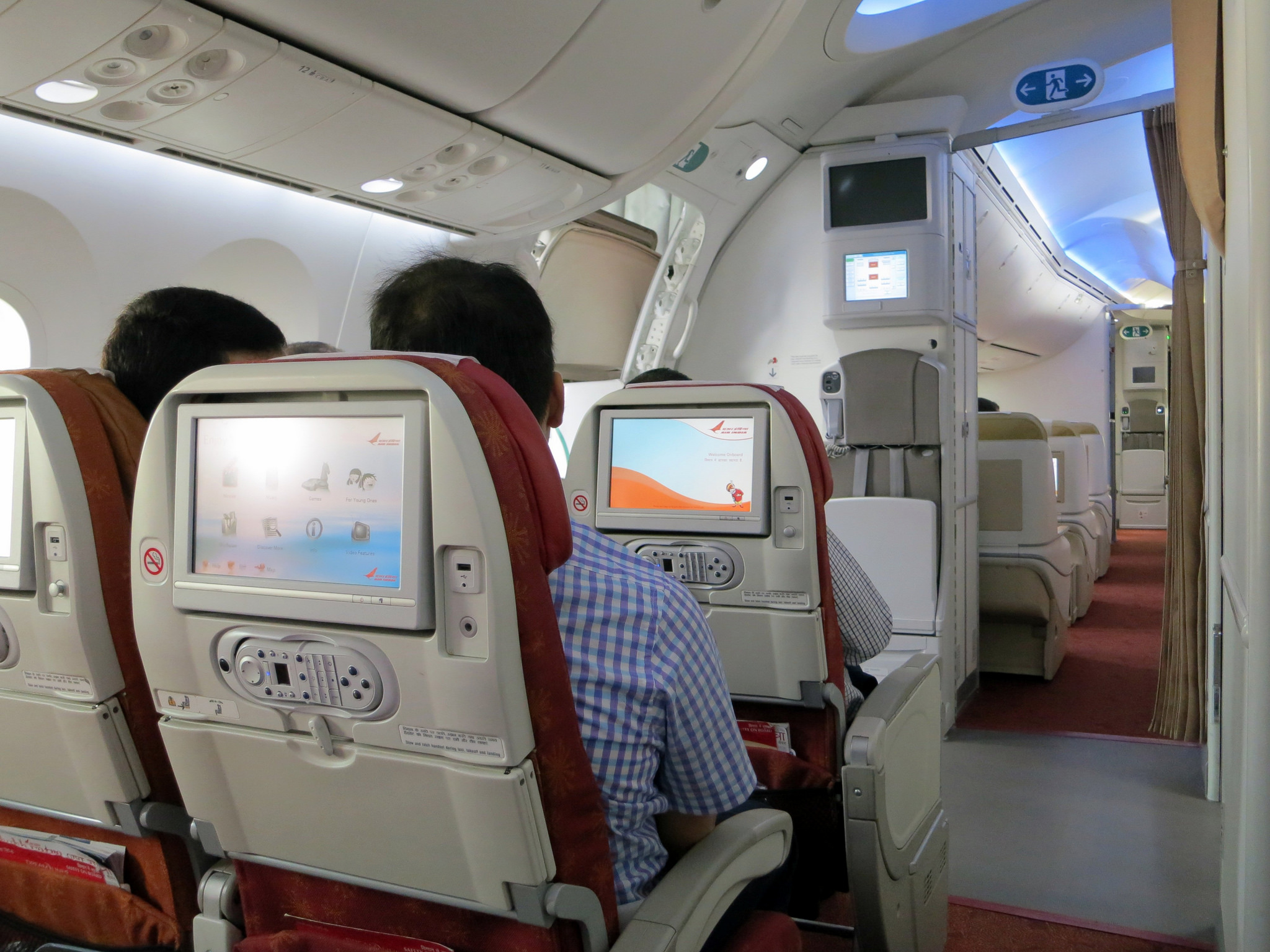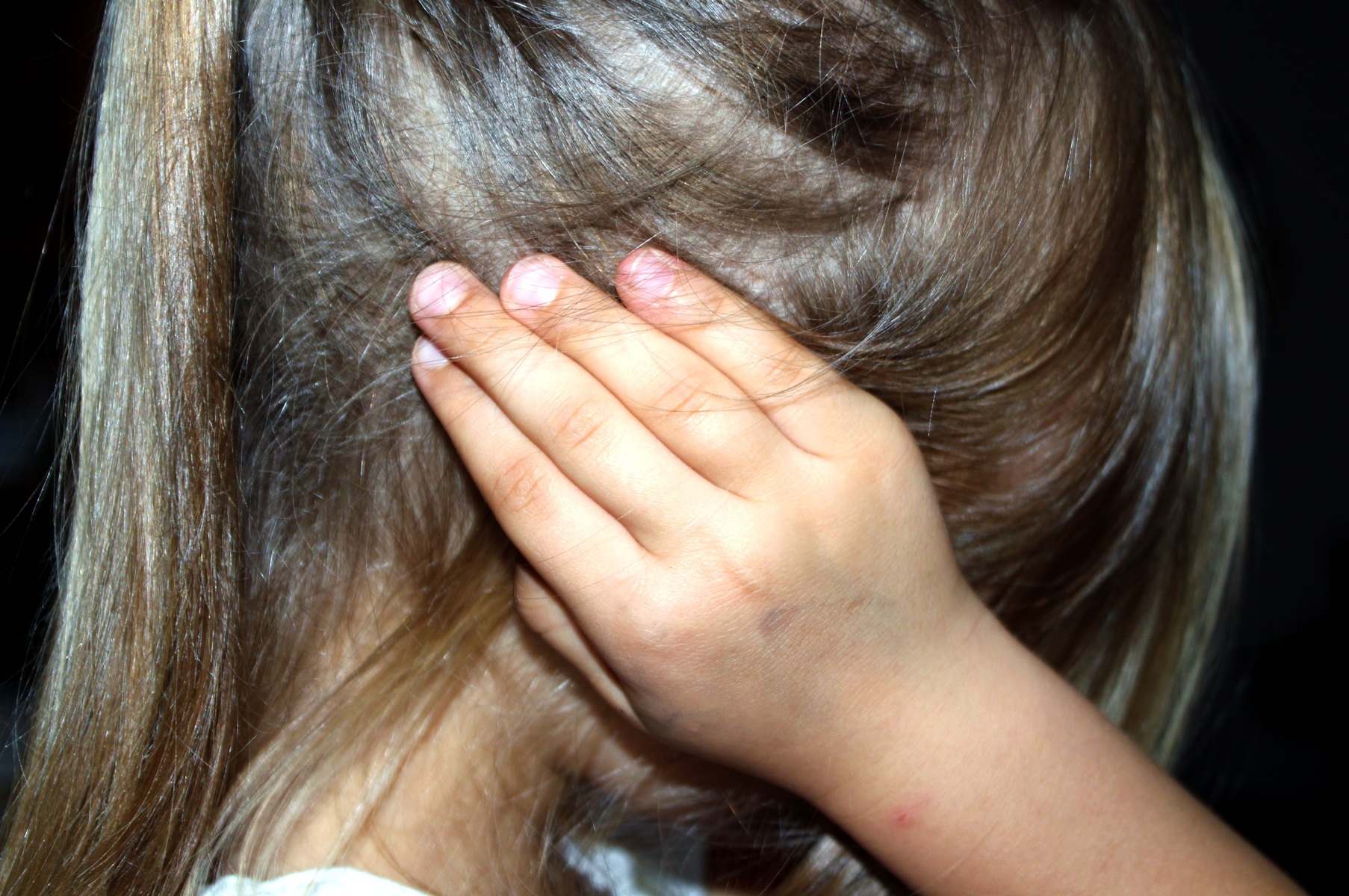Ear Bleeds Got You Spooked? A Doctor Shares How to Have a Pain-Free Flight
Understanding why it happens as well as taking a few precautions can ensure that your journey is pleasant from take-off to landing!

Dreading your next trip because you are one of the hundreds of fliers who suffers from pain in the ears the minute your flight takes off? Ear problems are surprisingly common among travellers on aeroplanes.
While they can be mildly annoying sometimes, at other times, the effects can be more severe, including acute pain in the ears, ear discharge and even temporary loss of hearing.
However, fear not. Understanding why it happens as well as taking a few precautions can ensure that your journey is pleasant from take-off to landing!
Understanding blocked ears

Source: Twitter
The Eustachian tube is a membrane-lined tube, about the thickness of a pencil lead, which connects the back of the nose to the ears.
On one side (the ear), the tube opens into a space surrounded by bone and closed off from the outside world by the eardrum. The vibrations of this drum into that sealed space is how we process sound.
On the other side, the tube is open to the outside world through the nose and mouth.
The closed space in the ear is lined by a membrane that continually absorbs air. This lost air is then continually replaced by the Eustachian tube from the open side.
Also Read: Planning to Quit Carbs to Lose Weight? Here’s Why That Might Be A Bad Idea!
Thus air pressure outside the eardrum and inside the sealed space remains equal.
When there is a difference in pressures, the ear feels blocked. This is because if the air in the middle of the ear is absorbed but not replaced, a vacuum forms that pulls the eardrum inwards.
This condition blocks sound as the eardrum cannot vibrate in that condition. And the stretching of the eardrum causes the sharp pain we feel.
This vacuum also pulls fluid into the sealed space from the membrane, filling the middle of the ear with fluid.
This can be dangerous as when the fluid builds up it punctures the eardrum – leading to discharge from the ear.
Common causes of a Eustachian block: The common cold, nasal allergies and an infection in the tonsils or throat.
How does flying cause ear blocks?

Source: Stefan Krasowski/Flickr
When your flight takes off or lands, there is a rapid change in the air pressure. This causes swelling of the membranes, which does not allow the air pressure inside the ear to equalise rapidly. This, in turn, results in blocked Eustachian tubes and other ear problems.
How to unblock the tubes
1) Swallowing unblocks the Eustachian tubes by activating the muscles that open them. Chewing gum or sucking on hard candies helps this process. Yawning works better.
2) If yawning and swallowing both don’t work, pinch your nose shut, close the mouth and gently blow air into the nose from the mouth.
3) If the pain and block persists, see a doctor immediately to get decongestant nasal drops and sprays to open the Eustachian tubes before fluid builds up in the ears.
4) In rare cases, if the build-up of fluid in the ear is too much, the doctor may make a tiny puncture in the eardrum to release it. If the problem is recurrent, small plastic or metal tubes are inserted into the eardrum to equalise the pressure. These are called grommets, and they fall out when the Eustachian tube function recovers.
For babies

Source: PxHere
Sucking on a pacifier or a feeding bottle during take-off or landing works. It is a good idea to feed the baby during the flight. Make sure you don’t allow the child to sleep during take-off and landing.
For people with chronic problems
Nasal decongestant drops and sprays can be used to open the Eustachian tubes.
Tips for air travellers
- If you have had ear surgery or are seeking treatment for any problem in your ears, ask your doctor if it’s okay for you to take a flight.
- If you are currently suffering from a severe cold, sinus infection, or an allergy attack, consider postponing your trip.
- Keep a decongestant pill or nose spray handy. Use it approximately an hour before the descent to help the ears pop.
- Make sure you stay awake during take-off and landings.
- Carry chewing gum or a couple of hard candies that you can pop into your mouth during your flight.
(Edited by Vinayak Hegde)
Like this story? Or have something to share? Write to us: [email protected], or connect with us on Facebook and Twitter.
NEW: Click here to get positive news on WhatsApp!
If you found our stories insightful, informative, or even just enjoyable, we invite you to consider making a voluntary payment to support the work we do at The Better India. Your contribution helps us continue producing quality content that educates, inspires, and drives positive change.
Choose one of the payment options below for your contribution-
By paying for the stories you value, you directly contribute to sustaining our efforts focused on making a difference in the world. Together, let's ensure that impactful stories continue to be told and shared, enriching lives and communities alike.
Thank you for your support. Here are some frequently asked questions you might find helpful to know why you are contributing?


This story made me
-
97
-
121
-
89
-
167














